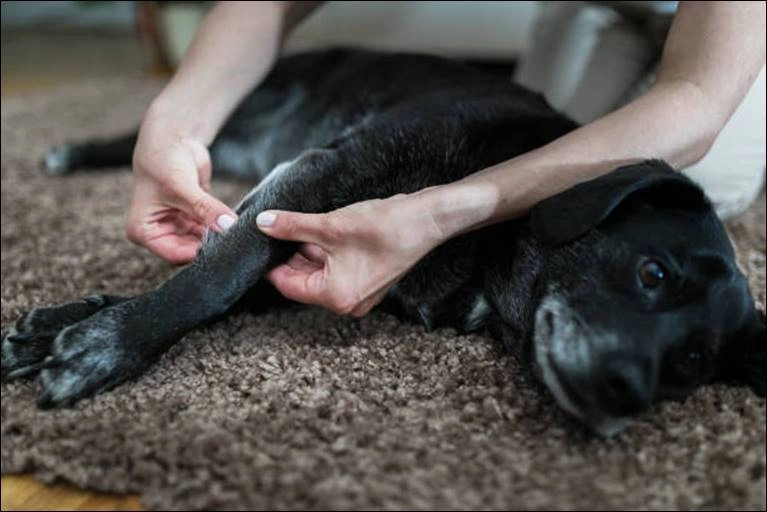The Growing Role of Medical Massage in Veterinary Care
Explore the role of medical massage in veterinary care for pets. Learn its benefits for pain relief, mobility, and wellness at BestFamilyPets.
Medical massage is transforming veterinary care, offering a non-invasive way to enhance pet health and well-being. As pet owners and veterinarians increasingly seek integrative therapies, animal massage therapy has emerged as a powerful tool for pain relief, mobility improvement, and stress reduction.
This blog post from BestFamilyPets explores the role of medical massage in veterinary care, its evidence-based benefits, and practical guidance for pet owners and professionals. Backed by expertise and authoritative sources, we aim to provide trustworthy insights into this growing field.
What Is Medical Massage for Pets?
Medical massage for animals in veterinary care involves targeted, therapeutic techniques to address specific health issues in animals. Unlike relaxation-focused pet massages, it focuses on clinical outcomes like pain management, injury recovery, and improved circulation. Techniques such as myofascial release, Tui Na, and lymphatic drainage are applied by certified professionals to support conditions like arthritis, post-surgical recovery, and chronic pain.
This practice integrates seamlessly with traditional veterinary treatments, offering a holistic approach to pet wellness. According to Veterinary Practice News, medical massage is gaining traction as veterinarians recognize its role in complementing conventional therapies.
Why Medical Massage Matters for Pet Health
The role of medical massage in veterinary care lies in its ability to address a range of health challenges without relying solely on medications. Here’s why it’s becoming a go-to therapy:
- Pain Relief: Studies, such as those published in the Journal of Veterinary Internal Medicine, show massage reduces pain in animals with conditions like osteoarthritis or cancer by stimulating endorphin release.
- Improved Mobility: Techniques like myofascial release enhance joint flexibility, benefiting aging pets or those recovering from surgery.
- Stress Reduction: Massage lowers cortisol levels, promoting relaxation and supporting mental health, as noted in human studies adaptable to animals.
- Circulation and Recovery: By boosting blood flow, massage aids in reducing edema and speeding up healing, particularly post-injury.
For pet owners, this means a better quality of life for their animals. Veterinary professionals see it as a way to enhance treatment plans, while students explore its potential in integrative medicine.
How Medical Massage Benefits Specific Conditions
Medical massage is versatile, addressing various health issues in pets. Below are key applications, supported by real-world examples:
- Musculoskeletal Pain: Dogs with hip dysplasia or cats with spinal issues benefit from targeted massage to reduce muscle tension and improve range of motion. For instance, a certified therapist helped a Labrador recover mobility after a hip injury, as shared in a case study by the American Association of Rehabilitation Veterinarians.
- Post-Surgical Recovery: Massage supports tissue healing and reduces scar tissue formation, helping pets regain strength faster.
- Cancer Support: For pets undergoing chemotherapy, gentle massage can alleviate pain and stress, improving their comfort.
- Chronic Conditions: Conditions like arthritis or degenerative joint disease see significant improvement with regular sessions, as massage promotes circulation and reduces inflammation.
These applications highlight why the role of medical massage in veterinary care is expanding, offering non-pharmacologic solutions for complex health needs.
The Science Behind Veterinary Massage Therapy
The efficacy of medical massage stems from its impact on the body’s physiological processes. Research, including studies from ScienceDirect, shows massage influences the parasympathetic nervous system, promoting relaxation and reducing stress hormones. Key mechanisms include:
- Neurotransmitter Modulation: Massage increases dopamine and serotonin levels, improving mood and reducing pain perception.
- Circulatory Benefits: Enhanced blood flow delivers oxygen and nutrients to tissues, aiding recovery.
- Lymphatic Drainage: Techniques reduce swelling, crucial for post-operative or injury-related edema.
While veterinary-specific research is still emerging, human studies provide a strong foundation, with experts like Dr. Narda Robinson emphasizing its applicability to animals. However, transparency is key: more double-blind studies are needed to solidify these findings in veterinary contexts.
Finding a Qualified Veterinary Massage Therapist
Choosing a certified professional is critical to ensure safe and effective care. Here’s how pet owners can find the right therapist:
- Verify Credentials: Look for certifications from accredited institutions like the International Association of Animal Massage and Bodywork. Avoid practitioners from unverified “overnight schools” offering questionable degrees.
- Ask Questions: Inquire about training, experience, and integration with veterinary care. A qualified therapist should collaborate with your veterinarian.
- Check Reviews: Platforms like Yelp or veterinary clinic websites offer insights into practitioner reliability.
Veterinary professionals seeking to refer clients or integrate massage into their practice can explore training programs through organizations like the American Animal Hospital Association. These programs ensure therapists meet rigorous standards, enhancing trust and safety.
Comparing Medical Massage to Other Therapies
Pet owners often weigh medical massage against alternatives like acupuncture or physical therapy. Here’s how it compares:
- Vs. Acupuncture: Both reduce pain, but massage is non-invasive and focuses on muscle and tissue manipulation, while acupuncture targets energy meridians. Massage may be more accessible for pets sensitive to needles.
- Vs. Physical Therapy: Physical therapy often includes exercise-based interventions, while massage focuses on hands-on tissue work. Combining both can yield optimal results.
- Cost-Effectiveness: Massage sessions are often more affordable than specialized treatments, offering long-term benefits like reduced medication reliance.
Testimonials from pet owners, shared on platforms like PetMD, highlight improved mobility and reduced pain, reinforcing massage’s value in integrative care.
Addressing Misinformation in Pet Massage Therapy
Social media can spread unverified claims, such as miracle cures or unsafe practices. To counter this:
- Emphasize Evidence: Rely on peer-reviewed sources and avoid overhyping benefits. For example, massage supports but doesn’t cure chronic conditions.
- Promote Veterinary Oversight: Always consult a veterinarian before starting therapy to ensure it aligns with your pet’s health plan.
- Encourage Lateral Reading: Verify claims by cross-referencing with trusted sources like the American Veterinary Medical Association.
By focusing on evidence-based care, BestFamilyPets aims to combat misinformation and build trust in the role of medical massage in veterinary care.
Practical Tips for Pet Owners
To integrate medical massage into your pet’s care:
- Start with a Veterinary Consultation: Ensure massage is safe for your pet’s condition.
- Choose a Certified Therapist: Use directories from reputable organizations to find qualified professionals.
- Monitor Progress: Track improvements in mobility, behavior, or pain levels to assess effectiveness.
- Combine Therapies: Pair massage with prescribed treatments for holistic care.
For veterinarians, consider referring clients to certified therapists or pursuing training to offer in-house services, enhancing your practice’s offerings.
A Shift Toward Whole-Animal Care
The acceptance of veterinary massage within mainstream medicine reflects a broader trend toward whole-animal and integrative approaches to animal health. As more research highlights its benefits, pet owners and veterinarians alike are turning to massage therapy as a safe and effective way to support long-term wellness in companion animals.
The demand has led to an increase in veterinary massage certification programs and training for professionals seeking to incorporate this therapy into their practices. Many veterinary clinics now offer massage as part of their rehabilitation services, while independent animal massage therapists provide specialized care in various settings, including pet spas, rehabilitation centers, and in-home sessions.
Resources for Further Learning
Explore these trusted resources to deepen your understanding:
- American Association of Rehabilitation Veterinarians for professional insights.
- Veterinary Record for peer-reviewed studies.
- International Association of Animal Massage and Bodywork for therapist directories and training programs.
Disclaimer: Always consult a veterinarian before starting medical massage for your pet to ensure safety and efficacy.
Conclusion
The role of medical massage in veterinary care is growing, driven by its proven benefits in pain relief, mobility, and stress reduction. By addressing the needs of pet owners, veterinary professionals, and students, this therapy bridges traditional and integrative care. At BestFamilyPets, we’re committed to providing evidence-based, trustworthy content to help you make informed decisions for your pet’s health. Explore this emerging field and discover how medical massage can enhance your pet’s well-being.
Frequently Asked Questions About Medical Massage in Veterinary Care
Explore common questions about the role of medical massage in veterinary care and its benefits for pets.
What is medical massage in veterinary care?
Medical massage in veterinary care involves therapeutic techniques to improve animal health, reduce pain, and enhance mobility. Performed by trained professionals, it targets specific conditions like arthritis or post-surgical recovery, promoting wellness in pets.
How does medical massage benefit pets?
Medical massage improves circulation, reduces muscle tension, and alleviates pain in pets. It supports recovery from injuries, enhances joint mobility, and promotes relaxation, improving overall quality of life for animals with chronic conditions.
Which animals can receive medical massage?
Dogs, cats, horses, and other pets can benefit from medical massage. It’s tailored to the animal’s size, species, and health condition, ensuring safe and effective treatment for various animals under veterinary guidance.
Is medical massage safe for pets?
Yes, when performed by certified professionals, medical massage is safe for pets. It’s non-invasive and customized to the animal’s needs, with veterinarians ensuring it complements existing treatments without causing harm.
What conditions can medical massage treat in pets?
Medical massage can treat conditions like arthritis, hip dysplasia, muscle injuries, and post-surgical stiffness in pets. It also helps manage stress, anxiety, and chronic pain, supporting overall health and recovery.
How often should a pet receive medical massage?
Frequency depends on the pet’s condition and veterinarian recommendations. Typically, sessions range from weekly to monthly, with chronic conditions requiring more frequent massages to maintain benefits and improve comfort.
Can medical massage replace veterinary treatments?
No, medical massage complements but doesn’t replace veterinary treatments. It works alongside medications, surgery, or physical therapy to enhance recovery and manage symptoms under professional veterinary supervision.
Who performs medical massage for animals?
Certified veterinary massage therapists or veterinarians with specialized training perform medical massage. Their expertise ensures safe, effective techniques tailored to the animal’s specific health needs and conditions.
How long does a medical massage session last?
A typical medical massage session for pets lasts 15 to 60 minutes, depending on the animal’s size, condition, and tolerance. Sessions are customized to maximize benefits without causing discomfort.
How can I find a qualified veterinary massage therapist?
Consult your veterinarian for recommendations or search for certified professionals through organizations like the International Association of Animal Massage and Bodywork. Ensure they have proper training and credentials.


